How To: Extend the Life of Your Bladder Expansion Tank
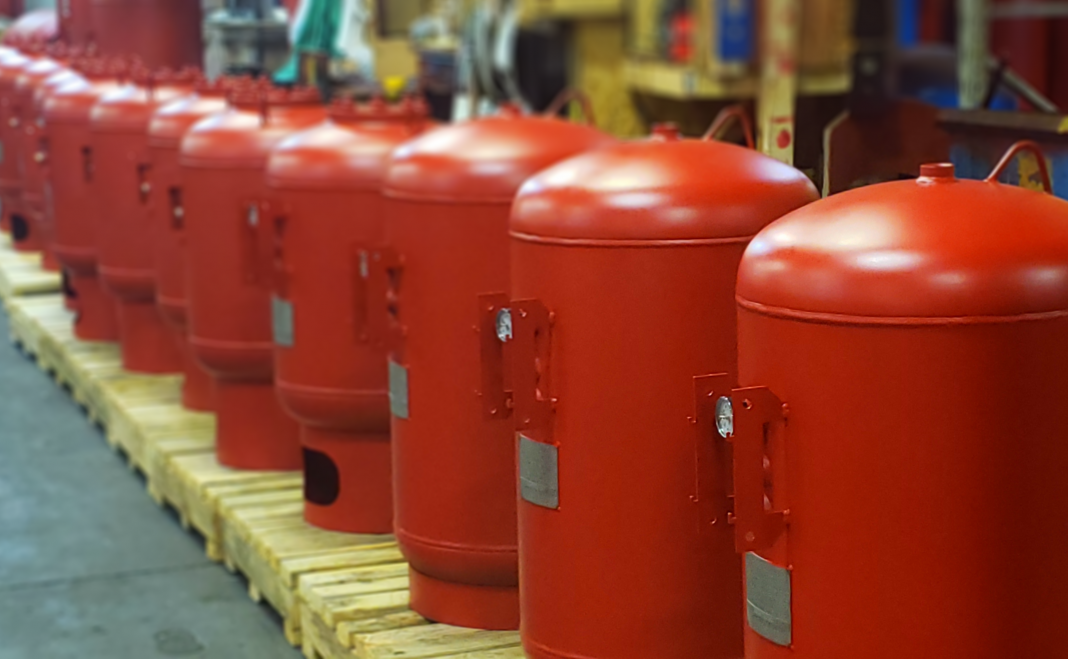
The bladder in an expansion tank will last for at least 50,000 cycles before it begins to lose some of its elasticity. While some factors can affect the longevity of your bladder, proper installation and maintenance will ensure a long and healthy life for your expansion tank. In this article, we will discuss the following factors to consider when installing and maintaining your expansion tank:
1. Undersized for the System
2. Improper Air Charge Setting
3. Air Loss Over Time
4. High Air Charge Pressure
5. Elevated Water Temperature
6. Top Feed vs. Bottom Feed Design
7. Annual Preventative Maintenance
1. Undersized for the System
An undersized tank can result in a large pressure swing from start up to operating stages. High water storage will lead to the bladder rubbing against the tank wall with each cycle. The bladder could wear due to these high-water volumes. It is therefore important to make sure you have sized your tank correctly.
2. Improper Air Charge Setting
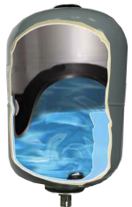 The air charge pressure at startup should be set equal to the minimum pressure of the system at the expansion tank location. If in the penthouse, this will be 8-12 psig. If the system towers 50 feet above the expansion tank, the air charge would be set to 30-35 psig. This air charge pressure should be equal to the auto feed or pressure reducing valve (PRV) pressure used to ensure a properly pressurized HVAC system.
The air charge pressure at startup should be set equal to the minimum pressure of the system at the expansion tank location. If in the penthouse, this will be 8-12 psig. If the system towers 50 feet above the expansion tank, the air charge would be set to 30-35 psig. This air charge pressure should be equal to the auto feed or pressure reducing valve (PRV) pressure used to ensure a properly pressurized HVAC system.
If the tank pressure is set too low as compared to the PRV setting, the tank will back fill with water until the air pressure in the tank equals the system water pressure. This will result in the same issues as an undersized expansion tank.
3. Air Loss Over Time
Air or nitrogen gas can find its way out of a sealed tank. The points of minute air loss that may not be easily observed through standard bubble testing include threaded connections, air charge valve, bulkhead fitting (bottom system connection on select tanks), and the bladder itself. The bladder is butyl, which has a very low permeability. However, higher pressure can drive more air through the bladder by means of osmosis. As the high-pressure water is “starved” for oxygen/air, it will pull molecules through the bladder over time. Annual maintenance is recommended to catch and prevent the natural loss of air over time.
4. High Air Charge Pressure (Typically Over 80 psig)
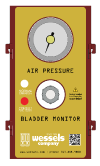 The expansion tank design incorporates an anti-extrusion screen. Its function is to hold back the bladder from extruding out the tank as air or nitrogen is added to reach the required minimum pressure. Without water to push against, the air charge can push the bladder through the anti-extrusion screen at elevated air charge pressures (typically well over 80 psig). The result can be a failed bladder during startup. To guard against this potential issue, a small amount of water can be placed inside the bladder (by opening the system valve momentarily). This incompressible water acts with the anti-extrusion screen to stop bladder extrusion.
The expansion tank design incorporates an anti-extrusion screen. Its function is to hold back the bladder from extruding out the tank as air or nitrogen is added to reach the required minimum pressure. Without water to push against, the air charge can push the bladder through the anti-extrusion screen at elevated air charge pressures (typically well over 80 psig). The result can be a failed bladder during startup. To guard against this potential issue, a small amount of water can be placed inside the bladder (by opening the system valve momentarily). This incompressible water acts with the anti-extrusion screen to stop bladder extrusion.
5. Elevated Water Temperature
The expansion tank butyl bladder is rated for 240oF intermittent temperature. The temperature of the fluid in the bladder is typically a meld of the temperature from startup to operating temperatures. A proper heat trap should arrest thermally migrating hot water from continuing to circulate and overheat the fluid in the tank, and the tank should approach ambient temperature of the equipment room. If not equipped with fluid side thermal isolation, the fluid can continually heat to the point of equaling the operating temperature. The closer to 240oF, the lower the life expectancy of the bladder.
6. Top Feed vs. Bottom Feed Design
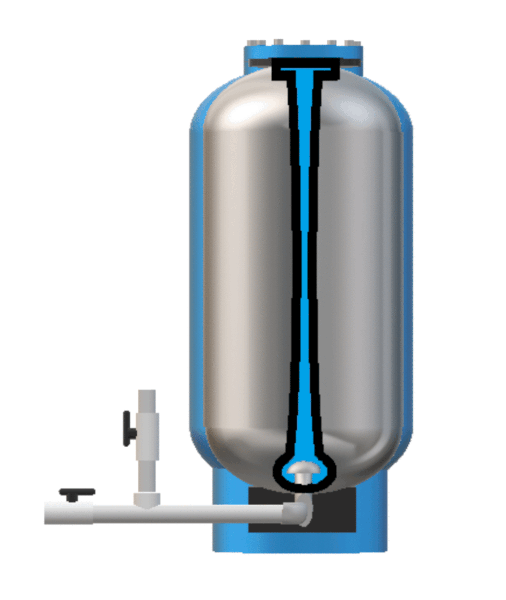 Most large HVAC bladder tanks are top feed design. This design has a lower manufactured cost and hence a lower selling price to the industry. However, the top design has a potential inherent issue: the bladder is being secured at the top of the tank and any weight (bladder and expanded water) will “tug” on the top bladder flange and neck. If any of the forementioned issues –undersized tank, air loss, or improper air charge—result in added water entering the bladder to equalize the pressure in the system, this added weight and subsequent HVAC system cycling will pull and stress the neck of the bladder. If higher fluid temperatures are also introduced into the bladder, a softening or reduced bladder elasticity can further create a “thinning” of material due to stretch.
Most large HVAC bladder tanks are top feed design. This design has a lower manufactured cost and hence a lower selling price to the industry. However, the top design has a potential inherent issue: the bladder is being secured at the top of the tank and any weight (bladder and expanded water) will “tug” on the top bladder flange and neck. If any of the forementioned issues –undersized tank, air loss, or improper air charge—result in added water entering the bladder to equalize the pressure in the system, this added weight and subsequent HVAC system cycling will pull and stress the neck of the bladder. If higher fluid temperatures are also introduced into the bladder, a softening or reduced bladder elasticity can further create a “thinning” of material due to stretch.
The top feed design is perfectly durable so long as you have properly sized, installed and performed regular maintenance. But Wessels also offers many designs for expansion tanks that incorporate a bottom connection construction. The bladder “floats” on the expanded water inside the bladder, which reduces or eliminates the stresses that can affect top outlet designs.
7. Annual Preventative Maintenance
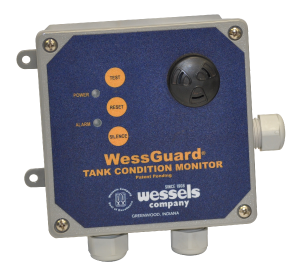 Finally, to ensure the longest life for your bladder expansion tank, Wessels recommends performing annual preventative maintenance. This includes checking the tank pre-charge and adjusting as needed. Wessels recommends installing its patented bladder monitoring system WessGuard® for further prevention and peace of mind. WessGuard® constantly monitors the bladder movement and issues an alarm that can be tied back to an energy management system if the bladder exceeds a “normal” operating parameter. This alarm can alert the end user that the tank should be serviced and placed back into proper pressure alignment, potentially avoiding a costly bladder breach.
Finally, to ensure the longest life for your bladder expansion tank, Wessels recommends performing annual preventative maintenance. This includes checking the tank pre-charge and adjusting as needed. Wessels recommends installing its patented bladder monitoring system WessGuard® for further prevention and peace of mind. WessGuard® constantly monitors the bladder movement and issues an alarm that can be tied back to an energy management system if the bladder exceeds a “normal” operating parameter. This alarm can alert the end user that the tank should be serviced and placed back into proper pressure alignment, potentially avoiding a costly bladder breach.
For more information about the WessGuard® Bladder Proximity Sensor or other Wessels products, please visit westank.com or call customer service at 317-888-9800.
